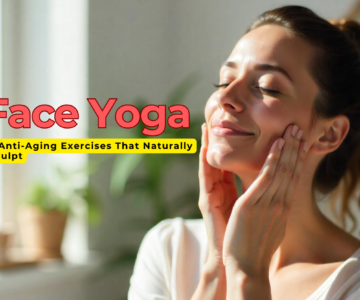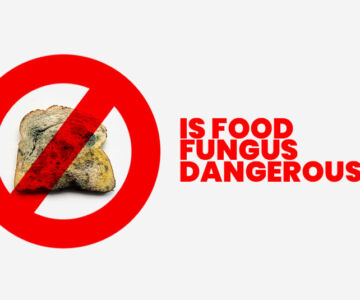 The Art of Slow Living: Why You Should Slow Down in 2025by admin / July 19, 2025
The Art of Slow Living: Why You Should Slow Down in 2025by admin / July 19, 2025Is Cold Water Good for You? The Truth About Cold Showers
In recent years, cold water therapy has made waves across the wellness, fitness, and mental health communities. From athletes plunging into icy baths to influencers praising cold showers as a secret to success, it’s hard to ignore the growing hype. But beyond the trend, is cold water really good for you?
Let’s dive deep into the science, tradition, and real-world experiences behind cold water therapy—and whether it deserves a place in your daily routine.
A Cold Start: The Origins of Cold Water Therapy
Cold water therapy isn’t new. Ancient civilizations used cold water for healing—Romans alternated between hot and cold baths in public bathhouses, while Ayurvedic traditions in India have long promoted cool showers for revitalizing the body and mind.
Modern wellness culture has simply reintroduced this timeless practice, giving it a fresh spin with phrases like “cold exposure,” “ice baths,” and “cold plunges.”
What Happens to Your Body During a Cold Shower?
When cold water hits your skin, several things happen instantly:
- Your blood vessels constrict, which helps reduce inflammation.
- Heart rate and breathing increase, preparing the body for a fight-or-flight response.
- Endorphins are released, providing a natural high.
- Over time, your body adapts to the shock, improving circulation and resilience.
This physiological response is what underlies most of the claimed benefits of cold showers.
Top 10 Science-Backed Benefits of Cold Showers
1. Boosts Alertness and Energy
One of the most immediate effects of a cold shower is a sudden jolt of energy. The icy shock triggers deep breathing, which increases oxygen intake and heart rate, leaving you wide awake and ready for the day.
Try it: Replace your morning coffee with a 2-minute cold shower. You might be surprised!
2. Improves Circulation
Alternating between hot and cold water can stimulate blood flow. When cold water comes into contact with the body, blood rushes to the vital organs. Over time, this improves cardiovascular circulation and can reduce muscle soreness.
How to Find Cost-Effective Family Health Insurance Plans
3. Supports Muscle Recovery
This is why elite athletes swear by ice baths. Cold exposure reduces inflammation, flushes out lactic acid, and helps muscles recover faster post-workout.
Pro tip: After intense exercise, try a 10-minute cold shower or an ice bath for faster recovery.
4. Strengthens the Immune System
Some studies suggest that cold showers can increase white blood cell count over time, potentially strengthening the immune response. A Dutch study even linked daily cold showers to fewer sick days.
5. Elevates Mood and Fights Depression
Exposure to cold water increases noradrenaline and beta-endorphin levels, both of which are known to improve mood. In fact, cold showers have been explored as a complementary treatment for depression.
This doesn’t replace therapy or medication but can offer mood-lifting support.
6. Improves Skin and Hair
Unlike hot water, which can strip natural oils, cold water helps tighten pores and improve skin tone. It also seals hair cuticles, leaving your hair shinier and less frizzy.
7. Enhances Mental Resilience
It takes willpower to step into a cold shower. Over time, this builds mental toughness and a sense of control over your body’s reactions. You start your day conquering discomfort—setting the tone for productivity and calm under pressure.
8. Increases Metabolism and May Support Fat Loss
Cold exposure can activate brown fat— a type of fat that burns calories to generate heat. While this won’t replace a balanced diet and exercise, it could support metabolic health in the long term.
9. Better Sleep at Night
Oddly enough, a cold shower in the evening can help some people sleep better. It may lower core body temperature, preparing you for deep rest. (Note: This is not the case for everyone—some feel more alert.)
10. Supports Lymphatic Drainage
The lymphatic system is responsible for clearing toxins from your body. Cold water helps it contract and pump lymph fluids more efficiently, reducing puffiness and improving immunity.
But Wait—Cold Showers Aren’t for Everyone
Before you crank the tap to freezing, let’s consider the risks and who should avoid cold showers:
- People with heart conditions should be cautious, as the cold can spike heart rate and blood pressure.
- Those with Raynaud’s disease or cold sensitivity might experience pain or numbness.
- Cold exposure right after eating or during illness might stress the body unnecessarily.
Always consult a healthcare provider if you have pre-existing conditions before experimenting with cold therapy.
How to Start: A Beginner’s Guide to Cold Showers
If the idea of jumping into freezing water terrifies you, you’re not alone. Here’s how to ease into it:
- Start warm, then gradually reduce the temperature at the end of your shower.
- Begin with 15–30 seconds of cold water, and increase by 10 seconds daily.
- Focus on your breath—deep, controlled breathing can help your body adapt.
- Be consistent. Even 3–4 times a week can bring benefits.
- Pair with intention. Use this time for gratitude, affirmations, or mindfulness.
Cold Showers vs Ice Baths: What’s the Difference?
- Cold Showers: More accessible, great for daily practice, especially in tropical climates.
- Ice Baths: Intense, better for deep recovery post-exercise or boosting resilience.
Both have overlapping benefits, so choose what fits your lifestyle.
Final Thoughts: Is Cold Water Good for You?
Absolutely—if done mindfully. Cold water therapy has been embraced for centuries and supported by modern science. Whether you’re seeking more energy, better skin, or a mental edge, cold showers can be a simple, powerful tool.
But remember, wellness is personal. What works wonders for one may not suit another. The key is to listen to your body, go slow, and stay consistent.
Ready to take the plunge?
Challenge yourself with 30 days of cold showers and see what changes for you. Your body—and mind—might thank you.



